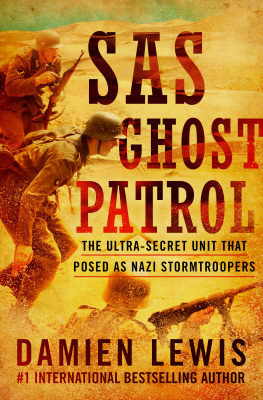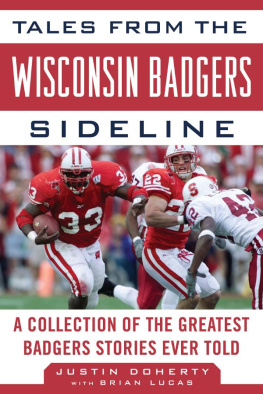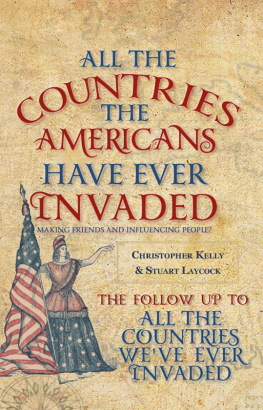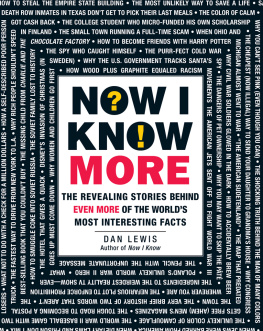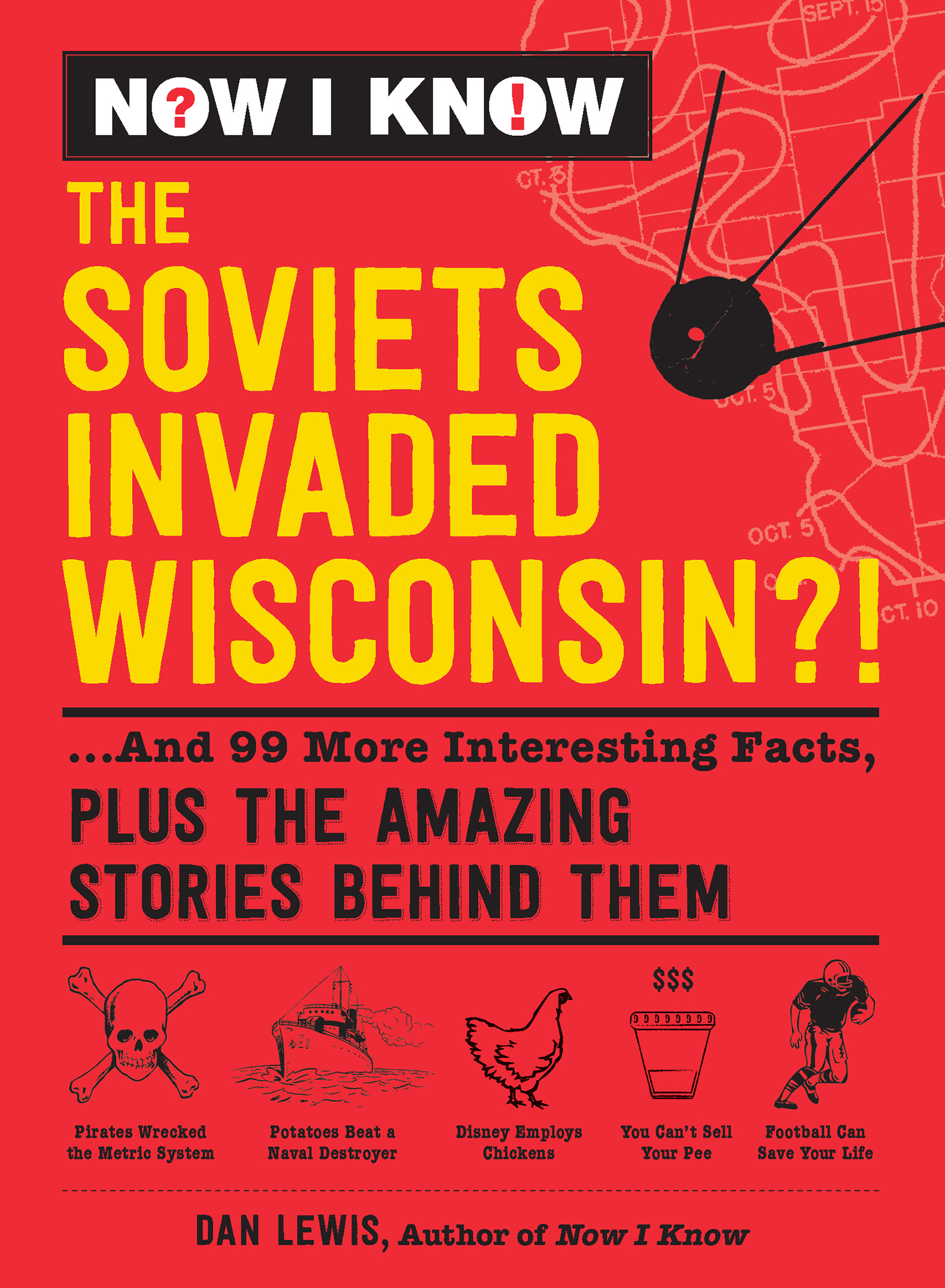Contents
Guide
DEDICATION
To Stephanie, Ethan, Alex, Annie, and my parents.

Adams Media
An Imprint of Simon & Schuster, Inc.
57 Littlefield Street
Avon, Massachusetts 02322
www.SimonandSchuster.com
Copyright 2019 by Dan Lewis.
All rights reserved, including the right to reproduce this book or portions thereof in any form whatsoever. For information address Adams Media Subsidiary Rights Department, 1230 Avenue of the Americas, New York, NY 10020.
First Adams Media hardcover edition October 2019
ADAMS MEDIA and colophon are trademarks of Simon & Schuster.
For information about special discounts for bulk purchases, please contact Simon & Schuster Special Sales at 1-866-506-1949 or .
The Simon & Schuster Speakers Bureau can bring authors to your live event. For more information or to book an event contact the Simon & Schuster Speakers Bureau at 1-866-248-3049 or visit our website at www.simonspeakers.com.
Interior design by Julia Jacintho
Interior images 123RF; Clipart.com
Cover design by Frank Rivera
Cover images Clipart.com; 123RF
Library of Congress Cataloging-in-Publication Data has been applied for.
ISBN 978-1-5072-1015-4
ISBN 978-1-5072-1016-1 (ebook)
Many of the designations used by manufacturers and sellers to distinguish their products are claimed as trademarks. Where those designations appear in this book and Simon & Schuster, Inc., was aware of a trademark claim, the designations have been printed with initial capital letters.
INTRODUCTION
Are You Curious?
Im curious. I like to learn about the world. And I like to share the stories I discover along the way. Thats why I first started Now I Knowthen as an email newsletterin the summer of 2010. The satisfaction you get from learning something newsomething that you even doubt at first because its just too strange (like Soviets invading Wisconsin)is truly addicting. So I cant tell you how happy I am that your curiosity has led you to this book.
In Now I Know: The Soviets Invaded Wisconsin?! Ive collected one hundred of my favorite fascinating facts and the stories behind them. Youll learn about the time McDonalds tried to trick kids into eating more broccoli. (Hint: It involved bubblegum.) Youll find out about the fateful day during World War II when the Americans and the Germans actually teamed up. Youll even read about why it may be okay to let a perfect stranger stick something in your earif youre in Chengdu, at least. And yes, youll also learn about the time when a small Wisconsin town was overrun by Communists (kind of).
Each story connects to the last in some way, because while I dont expect you to read this entire book in a day, I hope that each piece of mind-boggling trivia you do read inspires you to learn more. Each fact also comes with a bonus fact, so really, youre getting two hundred incredible facts. And when youre done? Theres more. That email newsletter I started years ago is still around today: Just go to NowIKnow.com to sign up for free. Youll get a fun new story to satisfy your curiosity each and every weekday.
With every fascinating story, youll be able to declare now I know. So let that curiosity take the lead. Turn the page to find out what the measles have to do with phone numbers, or flip through to any fact that calls to you. The world of the truly bizarre and unbelievable awaits!

THE DIGIT DISEASE
How Measles Led to Phone Numbers
Its your unique identification number. Ten to fifteen digits you regularly give to other people without much of a second thought, even those youve just met and, in some cases, have never spoken to before. Its your phone number!
Phone numbers have been around since 1880 and are an integral part of the modern communication infrastructure. But when phone networks were originally developed, there wasnt an immediate need for phone numbers. Youd simply pick up the receiver and be connected with an operator who would connect you to any person or business you needed to contact. And because calls in those days were local and the operators were local too, callers were usually connected correctly and quickly.
Telephone numbers probably didnt even cross the minds of those in charge of phone companies in those days. One of the first-ever phone books, for example, didnt use numbers at all; published in New Haven, Connecticut, it simply listed the handful of businesses in the area that had phones. The entire book fit on one single page; why bother developing a numbering system to accommodate fewer than one hundred customers?
However, in 1879, something happened in Lowell, Massachusetts, that changed phone history forever. In this year, Lowell found itself home to two things: a new telephone switchboard and a measles epidemic. Now the idea that the measles would have any effect on telephone operations seems strange, but in the time of manual switchboards and no vaccinations for disease, the measles put the entire system at risk.
The Lowell system was staffed by four people, and each ran the risk of contracting the disease. If the Lowell switchboard lost its operators, how would they connect calls? Backup switchboard operators were an option, but they didnt know the switchboard as well as the regular employees, so calls might not have been connected as quickly or accurately.
A physician named Moses Greeley Parker came up with the solution. The phone company would assign a unique ID number to each of its customers (roughly two hundred total), corresponding with each customers location on the internal switchboard. Now when a caller rang the operator, he or she would provide the ID number of the party the caller was trying to reach. The switchboard operator would have no trouble finding that number on the board in front of him or her, even if he or she had no previous experience as an operator for that community.
Surprisingly, Dr. Parkers suggestion wasnt well received at first. Many customers objected to being reduced to an arbitrary set of digits. According to Ammon Shea, author of The Phone Book: The Curious History of the Book That Everyone Uses But No One Reads, many customers expressed that they would sooner give up their telephones entirely rather than submit themselves to the dehumanizing indignity of being identified by a number. But reason eventually prevailed: When it came to preventing the measles from stopping phone service, Dr. Parkers solution was the best bet the town had. The phone company adopted his solution, and Lowell, Massachusetts, became the first town in the United States with phone numbers.
BONUS FACT
Dial the number, wait for the other side to pick up, and start talking. The phone is a pretty easy tool to use. But that wasnt always the case. Shea, in an interview about his book with Failure magazine, noted that nobody had any idea how to use one.When people first started using the telephone they would often yell into the wrong part. The solution? Early phone books came with instructions for how to use the phone.




